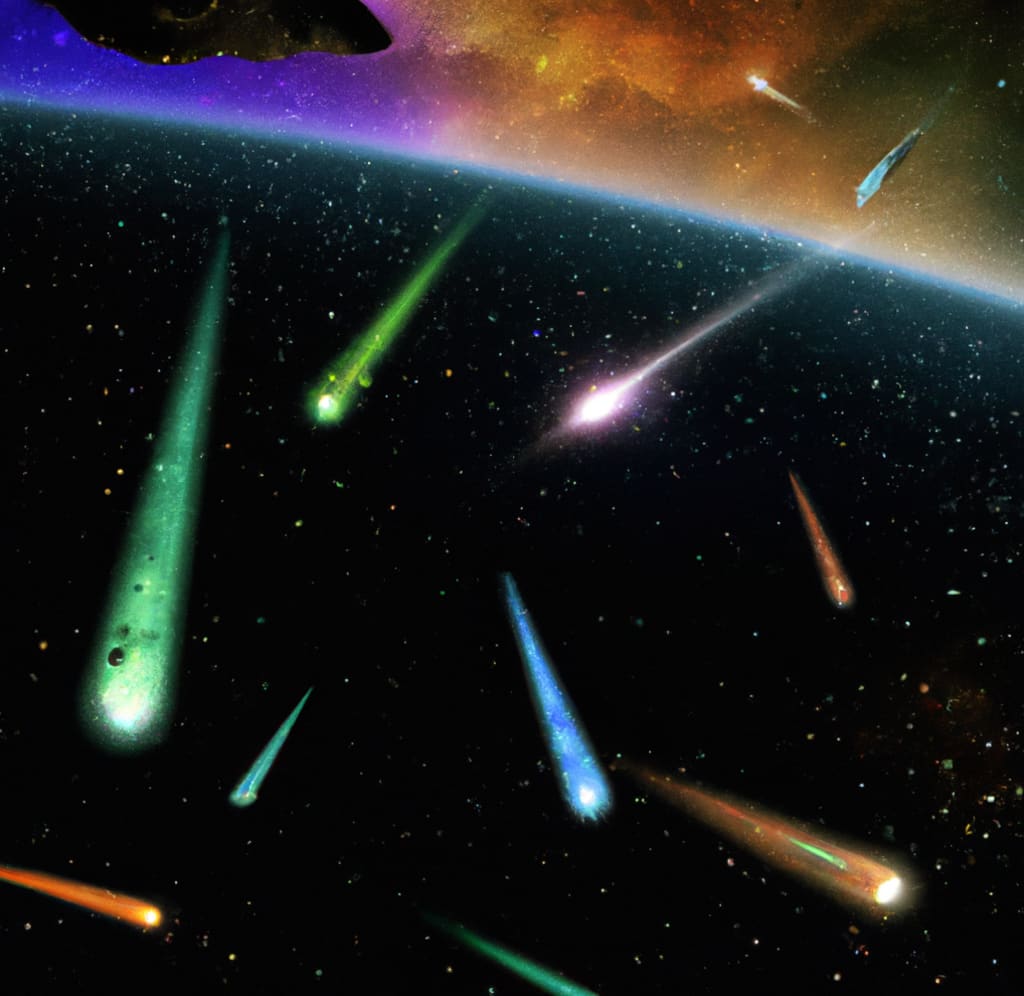The Colors Of The Big Show
Why Meteors appear in different colors.

One of the coolest astronomical events of the year is meteor showers. This is particularly true when they are shooting by at an impressive rate and shining in different colors. Why do they appear to shine in different colors than others?
Colors of Meteors
Meteors, or shooting stars, produce various colors as they pass through our atmosphere. The different colors are the result of a combination of factors. Things like the composition of the meteoroid and the chemical reactions as they enter the atmosphere determine the color they appear to the naked eye.
Yellow and White: Most meteors initially appear yellow or white. These colors indicate the presence of iron and magnesium in the meteoroid. As the meteoroid enters the atmosphere, it encounters high temperatures due to friction with the air. This heat causes these metallic elements to emit yellow or white light.
Green: Green meteors are quite common and occur when the meteoroid contains nickel. The green color arises from the excitation and subsequent emission of light from the vaporized nickel atoms. Nickel is relatively abundant in many meteoroids, which is why green meteors are frequently observed.
Blue: Blue meteors are less common but can be quite striking. They typically indicate the presence of ionized calcium in the meteoroid. As the meteoroid vaporizes, the ionized calcium atoms emit a blue glow. Blue meteors often have a magnesium-rich composition as well, which contributes to the blue coloration.
Red and Orange: Red or orange meteors are rarer and usually occur when the meteoroid contains minerals rich in elements like sodium and potassium. As these elements vaporize, they emit a red or orange light. The longer wavelengths of red and orange light allow them to penetrate the atmosphere more effectively, resulting in meteors of these colors being visible from greater distances.
During a meteor shower, where numerous meteors originate from the same point in the sky (known as the radiant), the appearance of different colors can be attributed to the specific composition of the meteoroids within that particular meteor shower. Different showers have distinct parent bodies, such as comets or asteroids, which can have varying compositions. As a result, meteor showers associated with different parent bodies may display different color characteristics.
Coming Meteor Showers To Enjoy
Delta Aquarids July 29–30
The Delta Aquarids meteor shower is coming July 29–30, 2023. While it's a weaker shower, it typically reaches its peak in late July and there's usually between 10 and 20 meteors per hour. Look from an area with a truly dark sky as they aren't as bright as some other meteor showers.
Perseids Meteor Shower August 11–13
The Perseids yield over 50 meteors per hour at its peak. In 2023 Perseids will be free of the Moon's glare so it's sure to be an exciting show.
Draconids Meteor Shower October 8–10
It's not the biggest show of the year but starts the busy season for meteor showers. After the Draconids' October 8–10 shower, there's a meteor shower every week or two until late December.
Orionids Meteor Shower October 20–21
Named after one of the more recognizable constellations in the night sky, Orion, the Orionids are named after the system from where the meteors appear to originate. Often, the Orionids are some of the brightest and fastest-moving streaking stars in the sky. They'll reach a peak before dawn on October 21st.
Leonids Meteor Shower November 17–18
The Leonids normally is an average show with 10–15 shooting stars per hour. Occasionally, they've been known to produce "meteor storms" and the result is thousands of meteors streaking through the sky. This year is expected to be an average shower.
Geminids Meteor Shower December 13–14
The Geminids is the biggest meteor shower of the year. The shooting stars streak across the sky the entire night and hit 76 meteors per hour at the peak of the shower. Since it's December, you won't have to stay up too late to enjoy the big show of meteor showers.
If you've never witnessed a meteor shower you're missing out on one of the most amazing things our universe treats us to, and you should make a point to step outside more often. When you do, now you can tell what the meteor is comprised of by its' vibrant color. Happy sky-watching!
Reference:
Why Do Meteors Glow In Vibrant Colors by Brian Lada, AccuWeather meteorologist
About the Creator
Jason Ray Morton
I have always enjoyed writing and exploring new ideas, new beliefs, and the dreams that rattle around inside my head. I have enjoyed the current state of science, human progress, fantasy and existence and write about them when I can.
Enjoyed the story? Support the Creator.
Subscribe for free to receive all their stories in your feed. You could also pledge your support or give them a one-off tip, letting them know you appreciate their work.






Comments (2)
Agree!!! Your story reminded me of the shooting stars that we observed while in Pennsylvania for a Penn State football game. It was the weekend of November 17th 2001. It was a magical weekend!!! Wonderful info, Jason!!!
Thanks for the info.